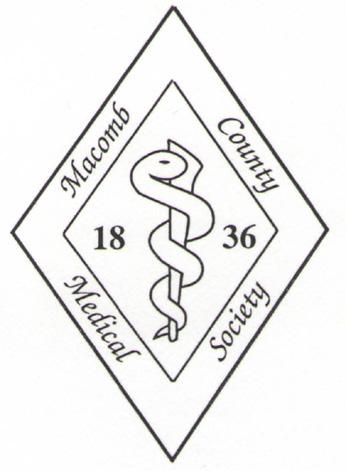

Macomb
Medicus
Toll
Editor
Adrian J.
Heidi L.
President
Aaron W. Sable, MD
President-Elect
To
Secretary
To be
Treasurer
Ronald B. Levin, MD
MSMS
Daniel M. Ryan, MD
Delegates & Alternates
Anthony P. Baron, MD
Terrence P. Brennan, MD
Adrian J. Christie, MD
Burton G. Engel, MD
Lawrence F. Handler, MD
Jane E. Krasnick, MD
Ronald B. Levin, MD
Klaudia Plawany-Lebenbom, MD
Vicente Redondo, MD
Aaron W. Sable, MD
Akash R. Sheth, MD
Executive
Heidi L. Leach
Journal of the Macomb County Medical Society
October/November/December 2022 | Vol. 30 | No. 4
Macomb Medicus Journal is published quarterly by the Macomb County Medical Society. Winter: Jan/Feb/ Mar, Spring: Apr/May/Jun, Summer: Jul/ Aug/Sep, Fall: Oct/Nov/Dec. Subscription to the Macomb Medicus is included in the society’s annual membership dues.
Statements and opinions expressed in articles published in the Macomb Medicus are those of the au thors and not necessarily those of the
The Greatest Doctor of Our Time
By: Aaron W. Sable, MDIn my article published in the Spring issue of the Macomb Medicus Journal I discussed the GOAT - Tom Brady, and the various injuries he, with help of his medical, surgical and rehabilitative team, overcame in order to be a winning and record setting quarterback.
In the medical world who would be the GOOT, The Greatest Doctor of OUR Time? After reviewing the list of Nobel Prize winners for Physiology or Medicine since the year 2000, I would nominate Paul Lauterbur, PhD and Sir Peter Mansfield, PhD for their work on MRI (Nobel Prize winners in 2003) for second place. Notably, both Lauterbur a chemist and Mansfield a physicist were medical scientists and not practicing physicians. [1] So perhaps for second place I should nominate Raymond V. Damadian, MD, the patent holder and inventor of the MRI, who was not included in the 2003 Nobel Prize.
Not without controversy I would nominate Anthony S. Fauci, MD as the Greatest Doctor of OUR Time. Here is a brief list of some of his accomplishments.
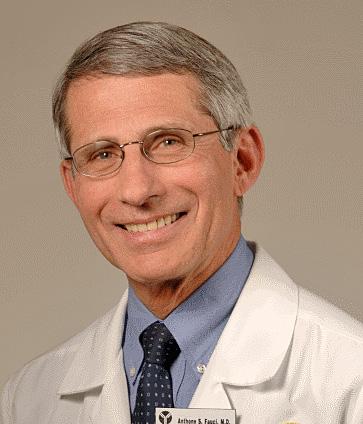
• He received his Medical degree from Cornell in 1966, where he was first in his graduating class.
• He has received 58 honorary doctoral degrees from universities in the United States and abroad.
• He is the Director of the National Institute of Allergy and Infectious Disease, 1984 – present.
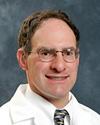
• He developed effective therapies for formerly fatal inflammatory and immune-mediated diseases such as polyarteritis nodosa, granulomatosis with polyangiitis (formerly Wegener’s granulomatosis), and lymphomatoid granulomatosis.
• He has been a leader in the HIV/AIDS epidemic and instrumental in developing effective treatments for people with HIV.
• He has been a key advisor to seven Presidents on global HIV/AIDS issues, and on initiatives to bolster medical and public health preparedness against emerging infectious disease threats such as Ebola, Zika, pandemic influenza, and COVID-19.
• He has been a leader throughout the global COVID-19 pandemic and is the Chief Medical Advisor to President Joe Biden.
• He is ranked as the 44th most-cited living researcher and ranked 9th out of 3.3 million authors in the field of immunology by total citation count between 1980 and April 2022.
• He serves on the editorial boards of many scientific journals and as an author, coauthor, or editor of more than 1,400 scientific publications, including several textbooks.
• He is the recipient of numerous prestigious awards, including the Presidential Medal of Freedom, the National Medal of Science, the George M. Kober Medal of the Association of American Physicians, the Mary Woodard Lasker Award for Public Service, the Albany Medical Center Prize in Medicine and Biomedical Research, the Robert Koch Gold Medal, the Prince Mahidol Award, and the Canada Gairdner Global Health Award.
Apparently, I am not alone in my view of Dr. Fauci’s contribu tions to medicine and humanity as a whole. In a recent op-ed in the Washington Post, Michael Gerson referred to Dr. Anthony Fauci as “the greatest public servant” he ever met. He went on to say “Fauci is a symbol of sorts. He demonstrates what can happen when a nation at the height of its power employs the finest scientific minds of their generation to the pursuit of public health goals few believed were possible. The result has been a golden age of public health, motivated by an American belief in human dignity.”
Dr. Fauci is planning on leaving government in December to “pursue his next chapter of his career.” I wish all of the best to Dr. Fauci on his future endeavors. However, I do agree with Gerson who said “Fauci’s forthcoming retirement as director of the National Institute of Allergy and Infectious Diseases will cost Americans, and people around the world, far more than they realize. But he will ever remain the greatest public servant I have known.”
Editor’s Note:
[1] The Nobel Prize in Physiology or Medicine is arguably the most prestigious award in modern healthcare. However, the number of clinicians receiving this award has significantly dropped over the past 100 years. 79% of Nobel Prizes in the first 30 years were awarded to clinicians. This contrasts greatly with the last 30 years, where only 20% of prizes have been awarded to clinicians. While a large proportion of research translation and impact is delivered by clinicians, the modern prizes appear to focus on molecular science. For more on this read Nobel Prizes in Medicine: are clinicians out of fashion? F
Macomb County Me dical Society Foundation


2022 Holiday Sh aring Card Project
Dear Members of the Macomb County Medical Society,
For this year’s Holiday Sharing Card Project we are giving you the option of contributing to either or both of the following local charities. We know that you receive several donation requests but due to lingering effects of the pandemic and record high inflation the need has never been greater and we hope that you will help those in need in your community. The MCMS Foundation is a 501(c)(3) nonprofit charitable organization , as it pays for all costs associated with this project, your donation is 100% tax deductible The MCMS Foundation’s Tax ID number is 38 3180176.
Mac omb C ounty Fo od Pro gram serves people in need of food through its 70 plus pantry distribution sites and its “Fresh to You” Mobile Pantry . Last year, they were able to feed nearly 500 people in need per day . 100% of every dollar donated is used to purchase food to feed hungry families, children, the elderly , vetrans, and the disabled throughout Macomb County.
Turni ng Point Shelter assists victims/survivors of domestic violence, sexual assault, and homelessness. They provide a 24-hour crisis hotline, emergency shelter, Forensic Nurse Examiner Program, legal advocacy, prevention education, support groups and counseling services that help thousands of women and their children.


We will be sending cards to all MCMS members with a list inside of this year’s Holiday Sharing Card
If
would like to have
as a donor, please complete the form below and return it along with
check to the MCMS Office no later than December 5, 2022.
If
contact the MCMS
at macombcms@gmail.com or call 810 712 2546.
The
Electronic-Prescribing Enforcement Slated for 2023
Unless there is a major reversal in the proposed 2023 Medi care Physician Fee Schedule, as of January 1, 2023, Michigan prescribers will be required to electronically transmit all prescriptions for controlled and non-controlled substances.
On October 3, 2022, the Michigan Department of Licensing and Regulatory Affairs (LARA) sent a formal statement to prescrib ers confirming that the Bureau of Professional Licensing (BPL) expects to begin enforcement of Michigan’s electronic prescribing standard at the beginning of the new year. Per the notice, “BPL’s enforcement of the electronic prescribing stan dard will coincide with the Centers for Medicare & Medicaid Services’ (CMS) enforcement schedule for Part D prescription drug programs.”
Michigan’s statute allows for a waiver to be issued if a prescrib er cannot meet the electronic prescribing requirements. The form and instructions for applying for the waiver is posted on the BPL website.
In addition to the waiver, Michigan’s statute provides the following exceptions to the e-prescribing mandate:
• If the prescription is issued by a prescriber who is a veterinarian licensed under this article.
• If the prescription is issued under a circumstance in which electronic transmission is not available due to a temporary technological or electrical failure.
• If the prescription is issued by a prescriber who has received a waiver from the department under subsection (7).
• If the prescription is issued by a prescriber who reasonably believes that electronically transmitting the prescription would make it impractical for the patient who is the subject of the prescription to obtain the prescription drug in a timely manner and that the delay would adversely affect the patient’s medical condition. A prescriber who does not electronically transmit a prescription under this subdivision shall document the specific reason for his or her belief that the delay would adversely affect the patient’s medical condition.
• If the prescription is orally prescribed under section 7333(3) or (4).
• If the prescription is issued by a prescriber to be dispensed outside of this state.
• If the prescription is issued by a prescriber who is located outside of this state to be dispensed by a pharmacy located inside of this state.
• If the prescription is issued and dispensed in the same health care facility and the individual for whom the prescription is issued uses the drug exclusively in the
health care facility. As used in this subdivision, “health care facility” includes, but is not limited to, any of the following:
o A hospital.
o A hospice.
o A dialysis treatment clinic.
o A freestanding surgical outpatient facility.
o A skilled nursing facility.
o A long-term care facility that provides rehabilitative, restorative, or ongoing skilled nursing care to an individual who is in need of assistance with activities of daily living.
• If the prescription contains content that is not supported by the National Council for Prescription Drug Programs
Prescriber/Pharmacist Interface SCRIPT Standard.
• If the prescription is for a drug for which the FDA requires the prescription to contain content that cannot be transmitted electronically.
• If the prescription is issued under circumstances in which the prescriber is not required to include on the prescription a name of a patient for whom the prescription is issued including, but not limited to, a prescription issued under section 5110.
• If the prescription is issued by a prescriber who is prescribing the drug under a research protocol.
• If the prescription is dispensed by a dispensing prescriber.
• If the prescription is for a dialysis-related drug that is administered as part of or incident to a home-based dialysis treatment.
See LARA’s updated Electronic Prescribing FAQs for more information on Michigan’s requirements.
Questions may also be directed to Dara J. Barrera 517-3365770 or Mary Kate Barnauskas 517-336-7575 at the Michigan State Medical Society. F

MDHHS Highlights New Hotline During October’s Domestic Violence Awareness Month
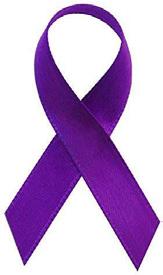
As part of Domestic Violence Awareness Month, the Michigan Department of Health and Human Services (MDHHS) is high lighting Michigan’s new, 24/7 hotline providing live, one-onone crisis support for all victims, survivors, support people and professionals who serve them. The hotline number is available by calling 866-864-2338 or texting 877-861-0222.

“MDHHS is joining national efforts to educate communities about the lasting trauma domestic violence has on individ uals and families,” said Elizabeth Hertel, MDHHS director. “It is incredibly important to provide support services for those experiencing abuse, and we encourage anyone in need to seek assistance.”
The hotline is free and provides local support that is tailored to each unique situation through trained advocates.
Hotline services are available 24 hours a day, seven days a week, 365 days a year via phone, chat, text or TTY, for those who are deaf or hard of hearing:
• Call: 866-864-2338
• Text: 877-861-0222 (standard text messaging rates apply)
• Chat: MCEDSV.org/chat
• TTY: 517-898-5533
Domestic violence is a pattern of behaviors used by one part ner to maintain power and control in a relationship. Domestic violence doesn’t discriminate and impacts all races, genders, education and economic statuses. Often, multiple forms of abuse are present. It is important to know behaviors to look for to seek support for self or others.
If you or someone you know is experiencing domes tic violence, Michigan’s Domestic Violence Hotline is a free, confidential, and anonymous resource avail able 24/7/365. Call 866-864-2338, text 877-861-0222, or chat online by visiting this link
Behavioral Health Mediation Now Available in Michigan

There is a new, free mediation program in Michigan designed to resolve matters related to experiences with Community Mental Health.
What is Behavioral Health Mediation?
In behavioral health mediation, a neutral third party will guide parties through a confidential communication, information sharing, and decision-making process. The mediator ensures all parties have a voice and there is a power balance at the table.
Behavioral health mediation improves communication and teaches participants to work together and problem solve by establishing root issues, identi fying positions, and recognizing solutions. It provides a space for all parties to share concerns and frustrations by being a confidential and impartial process. If a settlement is reached, the mediators will assist parties in writing an enforceable agreement that is crafted by the parties. Through mediation, one does not lose any of one’s due process rights (i.e., local appeal, grievance/complaint, etc.) by participating.
Why It’s Recommended
Behavioral health mediation is a process that provides a safe space to share concerns with a mediation professional. It also allows clients an impartial process where parties have an equal voice. This type of mediation is quick, with most cases settled in less than 30 days. Even if mediation doesn’t result in an agreement, most Michigan residents find the court alternative experience to be a success. Benefits include improved relation ships, trust built, and reduced stress level. And, mediation is a confidential process, meaning each party’s interests remain private.
What’s the Sign-Up Process?
Step 1: Fill out the “Request Mediation” form.
Step 2: A specialist will confirm eligibility.
Step 3: Case will be referred to their local Community Dispute Resolution Program center.
Step 4: The Community Dispute Resolution Program center will contact them and the appropriate Community Mental Health or Prepaid Inpatient Health Plan to conduct a formal intake process to understand the issues between the parties.
Step 5: Following the intake process, the Community Dispute Resolution Program center will schedule a mediation session within 10 business days.
This free, conflict-resolution option is available to those who qualify and paid for by the Michigan Department of Health and Human Services. F
Patients looking for their medical records from retired physicians frequently contact the MCMS. If you are retired or will be retiring shortly, please contact the MCMS at 877-264-6592 or email macombcms@gmail.com and let us know how patients can retrieve their records. If the records have been destroyed, please inform us of that also so we can note our database accordingly. Thank you!
We Would Like to Welcome the Following New Members
Edouard R. Daher, MD
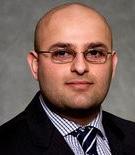
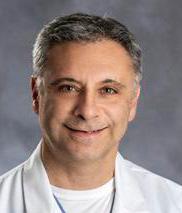
Cardiovascular Disease – Board Certified, Interventional Cardiology – Board Certified
Medical School: St. Joseph University School of Medicine (Beirut), 1990. Post Graduate Education: Internship at Hospital of Saint Raphael (New Haven, CT), completed in 1991; Residency at Yale University/ Yale-New Haven Hospital, completed in 1994; Fellowship at Yale University/Yale-New Haven Hospital, completed in 1998; Fellowship at St. Elizabeth’s Medical Center (Boston); Fellowship at Tufts Medical Center (Boston), completed in 2006. Hospital Affiliations: Ascension St. John, Beaumont Grosse Pointe, Beaumont Troy. Currently practicing at Eastlake Cardiovascular, 24211 Little Mack Ave., St. Clair Shores, MI 48080, p. 586-498-0440, f. 586-498-0401, www.eastlakecv.com
Harjeet S. Jhajj, DO
Internal Medicine – Board Certified
Medical School: Michigan State University College of Osteopathic Medicine, 2011. Post Graduate Education: McLaren Macomb Medical Center, completed in 2014. Hospital Affiliations: McLaren Macomb. Currently practicing at Macomb Internal Medicine Associates, 15520 19 Mile Rd., Ste. 480, Clinton Township, MI 48038, p. 586-228-1010, f. 586-228-8570, www.macombintmed.com.
Abdullah I. Rathur, DO
Cardiovascular Diseases – Board Certified, Internal Medicine – Board Certified Medical School: Michigan State University College of Osteopathic Medicine, 2015. Post Graduate Educa tion: Detroit Medical Center, completed in 2018; HCA Florida Healthcare Largo Medical Center, completed in 2021. Hospital Affiliations: Ascension Macomb-Oakland, Ascension St. John, Ascension River District. Currently practicing at Cardiology Associates of MI, 25910 Kelly Rd., Ste. B, Roseville, MI 48066, p. 586-772-3366, f. 586-772-3355, www.cardofmich.com
Anne H. White, MD Allergy & Immunology – Board Certified Medical School: Wayne State University, 1991. Post Graduate Education: St. John Hospital & Medical Center, completed in 1995; Henry Ford Hospital, completed in 1997. Hospital Affiliations: Henry Ford Macomb, Ascension Macomb-Oakland, Ascension St. John, Beaumont Grosse Pointe. Currently practicing at St. Clair Asthma & Allergy Center, 25200 Little Mack Ave., St. Clair Shores, MI 48081, p. 586-884-5656, f. 586-884-5674, www.stclair-aac.com
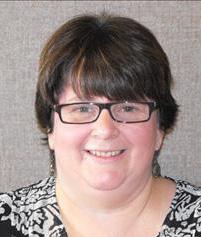
Take Charge of Your Mental Health
Achieving and maintaining mental wellness is the foundation
keeping the entire body healthy.
To support that effort, Macomb County Community Mental Health is proud to offer a great on-line, personalized program, My Strength.
“The health club for your mind,” MyStrength provides programs and support for many types of emotional and physical challenges, including:

• Reducing stress
• Improving sleep
• Managing depression
• Managing anxiety
• Mindfulness & meditation
• Balancing intense emotions
• Pregnancy & early parenting
• Managing chronic pain
MyStrength offers daily tips for the mind, body and spirit, and:
• Is Safe, Secure, and Confidential—Your privacy is our top priority, and MyStrength maintains the highest level of security available to create a completely confidential and safe environment.

• Has Proven Resources—based on the latest research and professional advice from best-selling authors.
• Is Packed with Tools — MyStrength offers many resources to improve mental health, with the latest research and professional advice.
MyStrength has helped many people across the country from the comfort and privacy of their homes.
There is no cost to join, and it is simple to get started. Go to www.mystrength.com. Select “Sign Up” and enter the access code: MCCMHComm. Complete the Wellness Assessment (it takes about ten minutes) and be on your way with personalized tools and supports.
Go Mobile! Using the access code, get the myStrength app for IOS and Android devices at www.mystrength.com/mobile
Make a Strong Flu Vaccine Recommendation
CDC recommends everyone six months and older get an influenza vaccine every year. Influenza vaccine has been shown to prevent millions of influenza illnesses, tens of thousands of hospitalizations, and thousands of deaths each year.


How to Make a Strong Flu Vaccine Recommendation
Based on years of research into vaccine motivators, CDC has developed a mnemonic device to help HCPs make a strong vaccine recommendation. This method known as “SHARE” can help you to m ake a strong vaccine recommendation and provide important information to help patients make informed decisions about vaccinations.
S- SHARE why an influenza vaccine is right for the patient given his or her age, health status, lifestyle, occupation, or other risk factors.
“This vaccine can protect you and your family from getting sick from flu. By getting the vaccine today, you’ll be protecting yourself and the people around you, like your children and parents, who may be more vulnerable to serious flu illness.”
H- HIGHLIGHT positive experiences with influenza vaccines (personal or in your practice), as appropriate, to reinforce the benefits and strengthen confidence in influenza vaccination.
“In addition to recommending a yearly flu vaccine to my patients, I get one each year to protect myself and my family from flu.”
A ADDRESS patient questions and any concerns about influenza vaccines, including for example, side effects, safety, and vaccine effectiveness, in plain and understandable language. Acknowledge that while people who get an influenza vaccine may still get sick, there are studies to show that their illness may be less severe.
“A flu vaccine cannot cause flu infection. The most common side effects of an influenza vaccine are mild, like redness, swelling, soreness, or a low grade fever for a flu shot. This should go away within a few days.”
“Flu vaccines protect against flu illness but aren’t 100% effective, so even if you get vaccinated you might still become sick with flu. It’s important to get your flu vaccine because studies show that even if you do get sick, vaccination may make your flu illness less severe.”
R- REMIND patients that influenza vaccines help protect them and their loves ones from serious influenza illness and complications that can result in hospitalization or even death for some people.
“Flu activity is going to start to pick up, and CDC says to expect more cases in the coming months. That is why I want to make sure I help protect you and your loved ones against flu and its potentially serious complications.”
E- EXPLAIN the potential costs of getting influenza, including potential serious health effects for the patient, time lost (such as missing work or family obligations), financial costs, and potentially spreading flu to more vulnerable family and friends.
“It’s important to get vaccinated this season because flu vaccination can reduce potential flu illnesses, doctor visits, and missed work and school due to flu, and can protect those around you who are more vulnerable to potentially serious flu complications.”
Rate of Food Insecurity Skyrockets for Americans with Cardiovascular Disease, Study Finds
By: Noah FromsonDiet is the greatest contributor to death from cardiovascular disease.
The number of Americans with cardiovascular disease who are food insecure – having limited or uncertain access to adequate food – has skyrocketed over the last 20 years, a national study finds.
A Michigan Medicine team analyzed data from the National Health and Nutrition Examination Survey representing 312 million American adults between 1999 and 2018, finding that 38% of people with cardiovascular disease were food insecure in 2017-2018. That number has more than doubled from two decades earlier, when the rate of food insecurity was 16.3%. The findings are published in JAMA Cardiology.
“Food insecurity is a common problem among people with cardiovascular disease, and we are seeing that issue become even more prevalent in recent years,” said Eric J. Brandt, MD, MHS, FACC, lead author of the study and a cardiologist at the University of Michigan Health Frankel Cardiovascular Center.
“We believe there is a two-way relationship here. Individuals who are food insecure may have increased risk for cardiovas cular disease, and vice versa. When one acquires heart disease, it impacts one’s risk for developing socioeconomic problems that could reduce access to adequate and quality food. Food insecurity can often occur with other social determinants of health, such as poor transportation access or access to health care, which further compounds this relationship.”
In the overall population, Black and Hispanic adults were more likely to report food insecurity. Since 2011, 24% of Hispanic adults and 18% of Black adults were food insecure, compared to 8% of Asian adults and 13% of white adults.
“Food insecurity has the potential to exacerbate existing racial and ethnic health disparities,” Brandt said. “But there is also a public realization here that differences in cardiovascular out comes across races and ethnicities aren’t related to the racial or ethnic origin of an individual, rather more to the social experi ence of an individual. In this broader viewpoint, having had a cardiovascular event could have a major impact on one’s social circumstance that places them at risk for food insecurity and other socioeconomic difficulties.”
Cardiovascular disease remains the leading cause of death in the United States, and diet is the greatest contributor to death from such disease – accounting for over 400,000 deaths in 2016, according to The US Burden of Disease Collaborators.
Those experiencing food insecurity are more likely to shoulder a greater burden from diet-related cardiovascular disease. They are also more likely to be stressed and not take prescription medication to treat cardiometabolic risk factors, such as diabe tes and high blood pressure.
As food insecurity remains a potent social determinant of health, researchers say it’s important for clinicians and health systems to use validated screening techniques to detect food insecurity among patients.
“Healthcare providers can impact the health and overall wellbeing of their patients by addressing food insecurity,” said co-author Tammy Chang, MD, MPH, MS, family physician at U-M Health and co-director of the National Clinician Scholars Pro gram at the U-M Institute for Healthcare Policy and Innovation.
“More patients than you may think are impacted by food inse curity. A team-based approach including social workers, case managers and social service departments can help patients get connected with local resources. If we are serious about promot ing health, healthcare providers need to ensure people have access to healthy foods and don’t go hungry.”
Additional authors include, Cindy Leung, ScD, MPH, John Z. Ayanian, MD, MPP, Brahmajee K. Nallamothu, MD, MPH, all of Michigan Medicine.
Paper cited: “Food Insecurity Among those with Cardiovascular Disease and Cardiometabolic Risk Factors Across Race/Ethnicity from 1999-2018,” JAMA Cardiology.
Tammy Chang, MD, MPH, MS

Researchers conclude that cardiovascular disease is associated with a higher risk for food insecurity. Those adults were more than two times likely to be food insecure than those without cardiovascular disease.
On Sept. 28, 2022 the federal government hosted the White House Conference on Hunger, Nutrition and Health - the first such event in over 50 years. The conference is intended to “catalyze the public and private sectors around a coordinated strategy to accelerate progress and drive transformative change in the U.S. to end hun ger, improve nutrition and physical activity, and close the dispar ities surrounding them,” according the U.S. Department of Health and Human Services.
This article was originally posted on the Michigan Medicine News website. F
“IF WE ARE SERIOUS ABOUT PROMOTING HEALTH, HEALTHCARE PROVIDERS NEED TO ENSURE PEOPLE HAVE ACCESS TO HEALTHY FOODS AND DON’T GO HUNGRY.”
HENRY FORD HEALTH FIRST IN MICHIGAN TO OFFER MULTI-CANCER EARLY DETECTION BLOOD TEST

First-of-its-kind Galleri® Multi-Cancer Early Detection blood test can screen for multiple cancers through a single blood draw.
In late September, Henry Ford Health and GRAIL, LLC announced Henry Ford Health as the first healthcare provider in Michigan to offer Galleri®, GRAIL’s Multi-Cancer Early Detec tion (MCED) blood test. Henry Ford is among an early group of healthcare providers in the U.S. to offer this MCED test.
“We are entering an era of unprecedented ability to detect cancer at its earliest stages, which may ultimately help save many lives,” said Adnan Munkarah, MD, Chief Clinical Officer at Henry Ford Health. “Diagnosing and treating cancer at an earlier stage often leads to more favorable outcomes. We are excited to offer this MCED blood test, which research shows can detect a cancer signal shared across more than 50 types of cancer through a single blood draw.”
The Galleri test is intended for use in those who are at an elevated risk of cancer, such as individuals ages 50 or older. Some younger people may also have an elevated risk of cancer, which is why Henry Ford is making the Galleri test available to patients who are 22 years or older, have no history of cancer or have been cancer-free at least three years, and are not currently pregnant.
Galleri MCED test can detect many cancers that are not com monly screened for today to allow for earlier treatment, and can be incorporated into a routine healthcare visit. If a cancer signal is found, the results can point to where in the body the cancer is coming from. This can help healthcare providers guide next steps.
“Routine cancer screenings remain essential for early detec tion,” said Ben Movsas, MD, Medical Director of Henry Ford Health Cancer. “But a MCED blood test can be used in addition to guideline-recommended cancer screenings, such as mam mography, colonoscopy, prostate-specific antigen or cervical cancer screening. In a clinical study, the test also detected some cancer types, such as pancreatic, ovarian and esophageal, that currently lack routine recommended screening guidelines. This can provide a way to detect cancers earlier that are often not detected until a later stage.”
All cells in the body release DNA into the bloodstream, but DNA from cancer cells is different from the DNA of healthy cells. The Galleri test looks at the DNA in a patient’s blood to deter
mine if any of it may have come from cancer cells. In a clinical study, the Galleri test demonstrated the ability to detect a shared signal from more than 50 types of cancer, more than 45 of which lack recommended screening tests today. Final results from the first PATHFINDER study, an interventional study that examined how well an MCED test can be integrated into clinical practice, were presented at the European Society for Medical Oncology (ESMO) Congress 2022 and demonstrated Galleri’s performance was consistent with findings from previous observational and case-controlled studies, underscoring the potential real-world ability of Galleri to find more cancers in earlier stages.
“For many people, routine cancer screenings are a part of the regular care they receive from their primary care physician,” said Dan Passerman, DO, Chair of Family Medicine at Henry Ford Health. “The ability to include this test in a routine visit, and to obtain actionable health information as a result, will help people protect their health in a very meaningful and convenient way.”
Because the test is not currently covered by insurance, the Galleri MCED test is an out-of-pocket cost. Patients may be eligible to participate in the interventional PATHFINDER 2 study, which is evaluating the implementation and perfor mance of Galleri in a clinical care setting. The study is currently enrolling individuals who meet the eligibility requirements, which include:
• 50 years or older and receive care at Henry Ford Health.
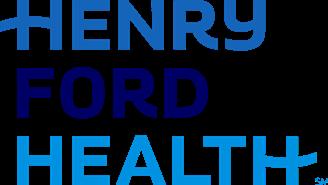
• Have never been diagnosed with cancer or have been cancer-free at least three years.
• Are not participants in previous or ongoing GRAIL sponsored studies.
Henry Ford team members and their dependents who are enrolled in a Health Alliance Plan (HAP) of Michigan insurance plan may be eligible for a test at no cost.
Galleri is available by physician order only. Those who may be interested in the Galleri test should consult with their Henry Ford primary care physician to determine whether the test is appropriate for them.
To learn more about the Galleri test at Henry Ford Health, visit www.henryford.com/cancerbloodtest
. F
MCLAREN PILOTS AI-POWERED MYCARE FOR REMOTE PATIENT CARE MANAGEMENT, PLANS EXPANSION

McLaren High Perfor mance Network, an accountable care organization (ACO) and subsidiary of Grand Blanc-based McLaren Health Care, recently launched MyCare for remote patient care management. The technologically enhanced, device-free pilot program remotely engages patients living with chronic conditions and intervenes when symptoms begin to show signs of worsening.
Launched in March, and administered and overseen by regis tered nurses, MyCare employs automated text messaging or phone calls to patients, asking questions to detect early symp toms and determine risk factors of impending complications. The platform, utilizing artificial intelligence, reviews responses, flagging those that may indicate a complication (or risk of com plication), initializing a review by a McLaren nurse. Based on clinical review and patient contact, the nurse and the primary care physician will advise the patient on next steps.
“The main goal is to keep our patients healthy and avoid unnecessary care and expenses,” said Andrea Phillips, Director of Care Coordination for McLaren High Performance Network. “This program bridges the patient care between physician vis its. It benefits the entire clinical team, allowing us to maximize our clinical resources and expand patient access to care.”
In the first few months, more than 1,700 patients had been enrolled in the pilot program. For the trial period, MyCare is focused on monitoring patients who have been diagnosed with heart failure, chronic obstructive pulmonary disease (COPD), and those who have recently been discharged from the hospital.
While the service’s goal is to help keep patients out of the hos pital and emergency department, MyCare is not a replacement for emergency services.
The process begins with automated regular text/phone messages, with questions and frequency determined by the patients’ conditions. Questions can range from requesting cer tain vital signs, such as heart rate or blood pressure, to how the patient is sleeping and generally feeling. The program will flag certain responses for real-time review by a care coordination registered nurse to personally follow up and gather additional
information while also directing the patient to next steps on a case-by-case basis.
Phillips says the program has earned very favorable reviews from physicians, patients and patients’ families, and that the program has led to a demonstrable reduction in hospital readmissions and avoidable emergency department visits. The success of the program has led to plans for its growth and expansion into other service lines and the monitoring of addi tional patient conditions.
MCLAREN MACOMB EARNS COMPREHENSIVE STROKE CENTER ACCREDITATION, ADDITIONAL HONORS

McLaren Macomb, already with the most technologically advanced and clinically experienced stroke program in Macomb County, has earned Comprehensive Stroke Center accreditation from The Joint Commission. A leading indepen dent, not-for-profit accrediting body certifying health care organizations and programs in the United States. The Joint Commission (TJC) symbolizes a health care organization’s quality and commitment performance standards.
McLaren Macomb is the first and only hospital in Macomb County to earn Comprehensive Stroke Center accreditation, the highest achievable designation for a stroke program. The hospital had previously been designated as a Primary Stroke Center by TJC.
“Since the beginning of the accreditation process, the goal for this program has always been to ultimately earn this Compre hensive Stroke Center status,” said Dr. Aniel Majjhoo, McLaren Macomb interventional neurologist and medical director of the McLaren Stroke Network. “Now that we’ve achieved this highest accreditation, we look forward to continuing to provide the latest in stroke care, access to stroke research trials and being an exceptional resource to our community.”
Advanced designations are earned only after passing a rigorous and thorough onsite survey by stroke-experienced healthcare professionals, and they are available only to acute care hospitals already accredited by The Joint Commission. McLaren Macomb originally earned its TJC accreditation in the spring of 2016, with its re-accreditation obtained in the winter of 2022.
Several aspects of the hospital’s program are evaluated, rang ing from staffing, on-site technology for stroke-specific diag nostic imaging and procedures, to demonstrating that certain neurological and interventional stroke procedures have been
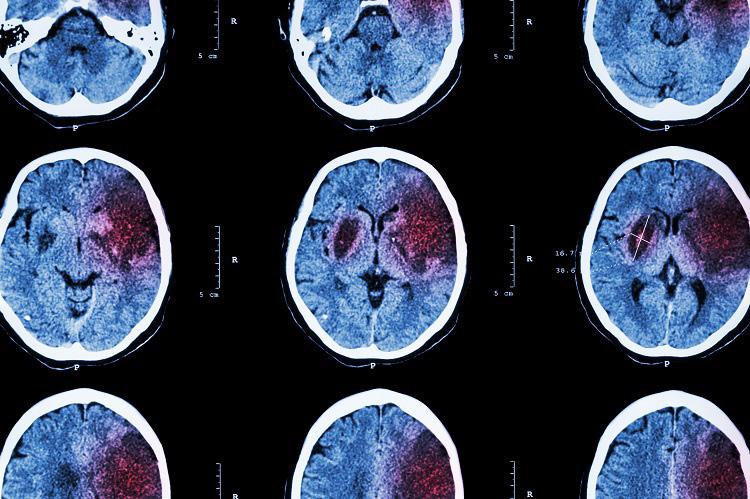
consistently performed, among other clinical care, performance and quality metrics.

In addition to its Comprehensive Stroke Center accreditation, the McLaren Macomb stroke program continued its streak of earning recognition from the American Heart Association/ American Stroke Association by earning its Get With The Guide lines®-Stroke GOLD PLUS for the fourth consecutive year.
The AHA/ASA also recognized the program with its Target: Stroke Honor Roll Elite distinction for its prompt use of IV tPA, a medication to dissolve stroke-causing blood clots.
Distinction levels are determined based on programs’ com pliance with the most up-to-date, evidence-based treatment guidelines set by the AHA/ASA to improve the care and clinical outcomes of stroke patients. The GOLD PLUS level — the highest achievable level — is earned by complying with these guidelines for 24 or more consecutive months.
Part of the McLaren Stroke Network, McLaren Macomb has routinely earned national recognition for its care, treatment, quality and outcomes, and was the first program in Macomb County capable of performing interventional thrombectomy procedures.
McLaren Macomb also recently expanded its stroke program with the addition of leading-edge, AI-powered technology that results in quicker, time-critical treatment decisions for stroke care.
To learn more about the stroke program at McLaren Macomb, visit www.mclaren.org/macombstroke. F
MCLAREN MACOMB EARNS ‘HIGH PERFORMING’ MARKS FOR CARE OF SERIOUS, CHRONIC CONDITIONS
McLaren Macomb has been recognized by U.S. News & World Report for its treatment of common, quality-of-lifehindering and potentially life-threaten ing conditions.
As part of its annual hospital rankings, U.S. News & World Report rated McLaren Macomb as ‘High Performing’ in its treatment and care of congestive heart failure, kidney failure, chronic obstructive pulmonary disease (COPD) and stroke.
A distinguished list, ratings take into account a health care provider’s proficiency in delivering care, as well as patients’ outcomes and experience.
Says McLaren Macomb president and CEO Tom Brisse, “To receive these honors is a reflection of the teamwork and collaboration among our physicians, nurses and other health care professionals, as well as their deep commitment to provid ing the highest quality care to the community we serve.”
Scores are determined following an analysis of care-related factors, such as patient outcomes, safety and staffing, and compared against more than 5,000 hospitals across the nation. Heart and kidney failures occur when the vital organs’ functions fail beyond a life-sustaining threshold and require medical management and close monitoring. COPD is an inflammation of the lungs that can lead to obstructed airflow and difficulty breathing, while stroke is an interruption of blood flow in the brain and a leading cause of death in the United States.
Learn more about all of the services offered at McLaren Macomb at www.mclaren.org/macomb. F
I N M E M O R I A M
Richard Carter Mertz, Jr., MD
May 15, 1939 – August 9, 2019
Richard Carter Mertz, Jr., MD, passed away August 9, 2019 at age 80, from complications following a stroke. He was born May 15, 1939 to Jane and Richard Mertz, Sr., the eldest of four boys. He spoke fondly of his youth, including his Lakeshore Drive paper route, building a race-boat in the basement with his father and brothers, and spending summers on the family boat.
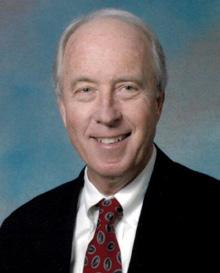
Richard graduated from Grosse Pointe High School and attend ed the University of Michigan’s undergraduate and medical schools. Following his internship at Henry Ford Hospital, he entered the Navy as a lieutenant and medical officer and served one year with a Marine Sea-Bee unit In Chu Lai, Vietnam. Upon his return, he married his college sweetheart Alyssa and
together they moved to California where he completed his second year of service at the San Diego Military Hospital.
After returning to Michigan in 1969, he completed a residency in Ophthalmology at Henry Ford Hospital and moved back to his beloved Grosse Pointe Shores to work and raise a family. Always invested in his community, he served The Village of Grosse Pointe Shores on the Planning Commission, as a Village Trustee, and Mayor Pro-Tem. In 1983, he designed and built the Metropolitan Eye Center and Out Patient Surgery Center in St. Clair Shores. As an ophthalmologist, he pioneered techniques in both cataract and refractive surgery. He enjoyed going to work each day because of the love and respect he had for his patients and his extraordinary staff. Passionate about patient care, he also spoke before Congress on the value of outpatient surgery centers.
His "work hard, play hard" ethic allowed him to follow his lifelong passions for flying and boating. He enjoyed taking his family and friends on jaunts by air having earned his multi-en gine, Air Transport Pilot rating and, eventually, his Eclipse Jet rating. By sea, "Dick" was a 40-year member of the Grosse Pointe Yacht Club and a Power Squadron instructor, obtained a U.S. Coast Guard Masters License and so enjoyed the cama raderie of fellow boaters. For 40 consecutive summers, he and Alyssa cruised northern Michigan waters and the Canadian North Channel and chaired several remote rendez-vouss. As his crowning nautical achievement, he cruised in all five Great Lakes in one summer. When his children were younger, Rich ard’s changing array of boats were docked behind the family cottage on Harsens Island. Accompanied by the family dog, Mitzi, Richard led expeditions to water ski, jet ski, fish, and, of course, get ice cream. When summer ended, U of M football became his passion. For 50 years, Dick and family attended the games in the Big House in Ann Arbor. He loved to tailgate and endlessly analyze the teams winning and losing years. Dicks favorite greeting was, "GO BLUE".
Richard is survived by his wife of 50 years, Alyssa, and his adored children, Julee (Paul Webster), and Jeff (Dr. Jennifer). He was a loving "Papa" to his grandchildren Charlotte and Amelia Mertz and Elliott and Carter Webster. He enjoyed spending time with his brothers John (Sharon) Mertz, Stephen Mertz, and Dr. Thomas (Anne) Mertz, his sister-in-law Susan Sovel (the late Robert Sovel) and the many nieces and nephews he admired. He was also deeply loved by his in-laws, the late Kopel and Estelle Kahn and their entire clan.
For those wishing to honor Richard, donations may be made to Guardian Angels Medical Service Dogs, Inc. to train and provide a service dog for a Michigan veteran in need. The on-line link is https://tinyurl.com/GAMSDMertz or donations may be sent to Guardian Angels Medical Service Dogs, Inc. 3251 NE 180th Ave. Williston, FL 32696.
CME with MSMS’ on Demand Webinars Available at www.msms.org/Education
Grand Rounds Webinar Series:
Changes to Michigan’s Auto No-Fault Act for Physicians

Cyber Preparedness & Response for Medical Practices
Domestic Violence and Sexual Assault (Intimate Partner Violence)
Emotional and Personal Resiliency:
Through Burnout
Federal
Harm Reduction in
and
LGBTQ Health in MI: An Overview of Efforts to Improve
the No Surprises
Post-Exertional
Sharing
Vaccine
Vaccine
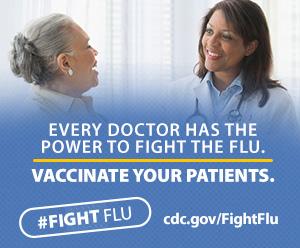
Practice Management Webinar Series:
Embezzlement:
Helping
Navigating
Office
The Value of Using Total Compensation Statements
By: Jodi Schafer, SPHR, SHRM-SCP | HRM Services | www.WorkWithHRM.com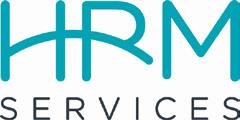
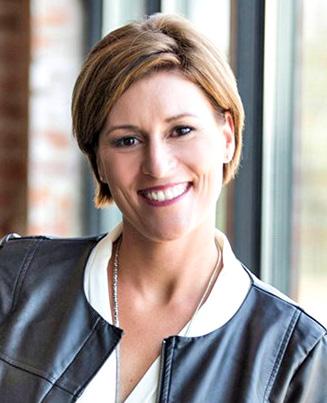
We are struggling in this job market to not only attract employees but retain the ones we have. Part of our challenge is that job candidates and current employees are expecting a much higher salary than what we can pay. We provide a rich benefits package, but candidates and current employees are only thinking about salary. What can we do to help them see the whole picture of what we are offering?
It’s not uncommon for employees to think only about the direct compensation they receive in the form of W-2 wages when evaluating the competitiveness of their current pay. However, as you indicate, employers often enhance hourly/salary rates with indirect compensation as well, like paid time off, uniform allowances, health and wellness benefits, etc. Unfortunate ly, the value of these benefits is rarely communicated with employees, which is why employees don’t often consider them when making decisions about whether to stay or go. In a labor market this tight, failing to provide current and potential employees with the dollar value of their TOTAL compensation (direct + indirect pay) is a missed opportunity. Therefore, you might consider creating total compensation statements, also known as total rewards statements, for each employee and prospective position.
A total compensation statement outlines the specifics related to pay (direct compensation) and benefits (indirect compensation) and the cost for each. It shows the employee (and prospective employee) what the practice is investing in them. When done well, being transparent about total com pensation can increase your employees’ understanding of the total benefits they are receiving, which goes a long way toward building trust with your employees. The employee can also use this information to better assess and compare their total compensation to other employers.
The process for creating total compensation statements is fairly straight forward. Often practices use an Excel spreadsheet and detail the specifics related to wages, including base pay and bonuses, the employer-paid costs for health and welfare benefits such as health, dental, and vision plans, short- and long-term disability, flexible spending accounts, life insurance, and retirement. They also include the quantitative value of employer-paid training/CE, paid time off, as well as federal social security, taxes, Medicare, workers compensation, and unemployment insurance paid on the employee’s behalf. Each employee receives this customized, itemized listing of the total investment you have made in them.
It is essential that these calculations are error free and calcu lated consistently across employees. Expect employees to compare their numbers and if they find a mistake, they will doubt the accuracy of the entire summary, which can erode trust and confidence in management. For this reason, it is also important to ensure that you have internal pay equity before implementing total compensation statements. Employees in like positions with like circumstances (e.g. experience, educa tion, performance) should be paid in a like manner. If you have concerns that you may not have a pay structure in place that is consistently applied, you should assess and make changes, as necessary, so that your transparency in sharing employee pay information does not backfire with a lot of questions that you cannot answer.
Additionally, you will want to spend some time thinking about the communication method you will use to distribute this information to your team. Will employees view this process as justifying why their pay is not increasing? This can be a typical response and you can proactively address this by:
• Clearly communicating the purpose for sharing the total compensation statements (e.g., to increase transparency, so that they have the full picture and understanding of their pay and benefits, etc.).
• Ensuring a strong and consistently applied performance evaluation process so that any differences in pay due to performance is documented and has been discussed with the employee.
• Ensuring internal pay equity.
As you weigh the pros and cons, consider steps you can take to increase confidence and transparency in your practice’s total rewards structure. Overall, employees appreciate transparency from their employers and if it is communicated well and the data is clear and easy-to-follow, employees may truly see the full picture of your investment in their success. This process, in and of itself, may also contribute to a more positive work culture, which is also a great retention strategy. F
MSMS SUPPORTS EXECUTIVE DIRECTIVE AIMED AT REDUCING INULIN COSTS FOR MICHIGAN PATIENTS
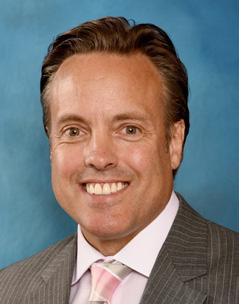
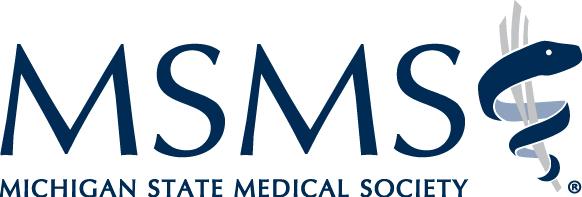
The following is a public statement from Thomas Veverka, MD, FACS, president of MSMS in response to Governor Whitmer issuing Executive Directive No. 2022-12 tasking State Department Directors with determining how to deliver generic, state-manufactured insulin at a lower cost to Michigan patients.

“The Michigan State Medical Society applauds Governor Whitmer for taking action to tackle a growing problem that’s current ly affecting nearly one million Michigan patients, and that’s the exorbitantly high price of insulin. Today, more than 10 percent of Michigan residents live their lives with diabetes and all the costs that come along with that diagnosis, which for many are substantial considering the cost of insulin in the United States is nearly 10 times more than what it is in many other countries around the world.”
“That’s unacceptable. No patient should have to choose between feeding their families or buying insulin, between keeping the heat on or getting the medicine they need to survive. Hopefully, those sorts of decisions will become a thing of the past as our state leaders and policymakers work to find a way to manufacture this critical, live-saving medicine and lower its cost for Michigan’s many patients in need.”
HEALTHCARE REMAINS MICHIGAN’S LARGEST PRIVATE-SECTOR EMPLOYER DESPITE PANDEMIC LOSSES
Provides Nearly 572,000 Direct Jobs, 224,000 in Hospitals Alone
The Partnership for Michigan’s Health reports healthcare directly employed nearly 572,000 Michigan residents in 2020, demonstrating that healthcare continues to be the largest private-sector employer in the state despite staffing losses attributed to the COVID-19 pandemic. The 2022 release of The Economic Impact of Healthcare in Michigan shows direct healthcare workers in Michigan earned $44.2 billion that year in wages, salaries and benefits. Hospitals alone employed 224,000 individuals in the state in 2020.
Direct healthcare employment helps create additional jobs that are indirectly related to or induced by healthcare. These indi rect, healthcare-supported jobs are held by more than 502,000 people who earned about $28 billion in 2020 in wages, salaries and benefits. Together with their employers, the nearly 1.1 mil lion workers in the healthcare sector contributed almost $15.2 billion that year in local, state and federal taxes. These taxes
include Social Security, income, motor vehicle, sales, property, corporate and more.
Data from 2020 shows the early impact the pandemic had on the economic strength of the healthcare sector in Michigan. In particular, the data illustrates the rise in labor costs as many nurses transitioned to contract labor with staffing agencies. Compensation for direct jobs in Nursing and Residential Care rose by about $200 million from 2019 to 2020, although the number of jobs fell by about 11,000. Specific to hospitals, the number of jobs fell by about 7,000 jobs from 2019 to 2020, but total compensation remained about the same.
The loss in jobs represents the initial exit of many healthcare workers due to burnout and stress associated with the pan demic. Both nationally and in Michigan, healthcare experienced a shortage of healthcare employees for several years and the pandemic caused a sudden loss of existing workers. With Medi care beneficiaries in Michigan increasing by more than 8% over the past five years to a total of 2.1 million people, Michigan needs more healthcare workers, now more than ever, to serve the changing needs of the state’s aging population.
The trend of nurses transitioning to contract labor is supported by recent research from the American Hospital Association, which found labor expenses per patient for hospitals increased 19% through 2021 compared to 2019. Increased labor expenses have a more profound impact on hospitals and health systems, as labor expenses account for more than 50% of total expenses for most hospitals. In addition, healthcare reimbursement is un able to quickly respond to inflationary pressures since rates are negotiated months in advance, presenting additional financial challenges when responding to sudden labor market demand.
The report was compiled by the Partnership for Michigan’s Health, which consists of the Michigan Health & Hospital Asso ciation, the Michigan State Medical Society and the Michigan Osteopathic Association, all based in the greater Lansing area. It uses 2019 and 2020 data, which is the most recent available.
“Physicians are and will continue to remain a key driver of healthcare employment and economic growth,” said Julie L. Novak, CEO of the Michigan State Medical Society. “Investing in physician-led team-based care and healthcare careers is key to the economic vitality and health of our state, local communi ties and residents. Physician practices, hospitals and other care settings offer good paying and stable jobs in careers that truly improve and save lives.”
Hospitals and healthcare providers remain focused on ensuring these jobs meet the needs of their employees, from offering competitive compensation and benefits to ensuring a safe and
supportive work environment. The Partnership for Michigan’s Health joined several other organizations in the Healthcare Workforce Sustainability Alliance to advocate for state funding to support the recruitment, retention and training of healthcare workers. These efforts were successful in Public Act 9 of 2022 which allocates $300 million in state funding to support Michi gan’s healthcare workforce.
The 16th and 17th editions of The Economic Impact of Health care in Michigan were compiled using IMPLAN® cloud software to quantify healthcare’s significant economic impact in the state. The data represents direct, indirect and induced health care jobs; taxes paid by those workers and their employers; and salaries, wages and benefits earned. The report is an online, interactive tool that allows users to examine these economic impacts from a statewide perspective and by region, county or congressional district. The data from both 2019 and 2020 is provided in two separate data tables. It is available at www.economicimpact.org
MEMBER EXCLUSIVE: POPULAR MEDICAL RECORDS GUIDE UPDATED
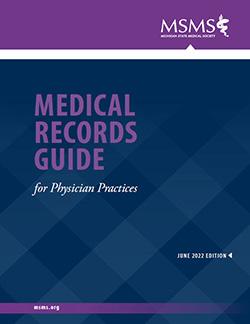
Do you and or your practice administrators have questions regarding the ins and outs of medical records? For example,
who owns the medical records? How long must we retain med ical records in our practice? What is the appropriate process for charging fees for copying and preparing medical records for a patient?
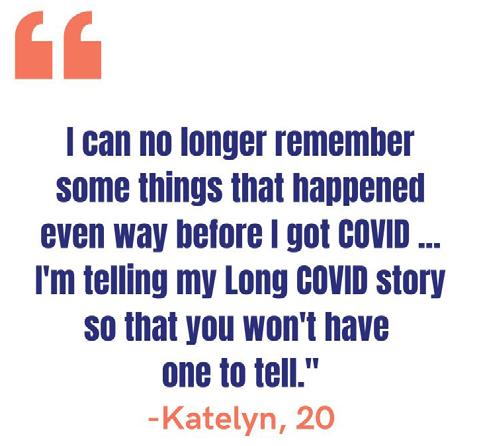
As part of the MSMS member exclusive Health Law Library you have access to the Medical Records Guide and so much more. This is a useful tool for all Michigan physicians. Bringing this piece to life digitally allows for MSMS member physicians to access this information 24/7.
Materials such as the Medical Records Guide are available to MSMS members to download free of charge. Please visit www.MSMS.org/Resources to find a variety of valuable resources available to physicians and their practice. Should you have any questions about the materials provided, please contact Stacey Hettiger or 517-336-5766. F
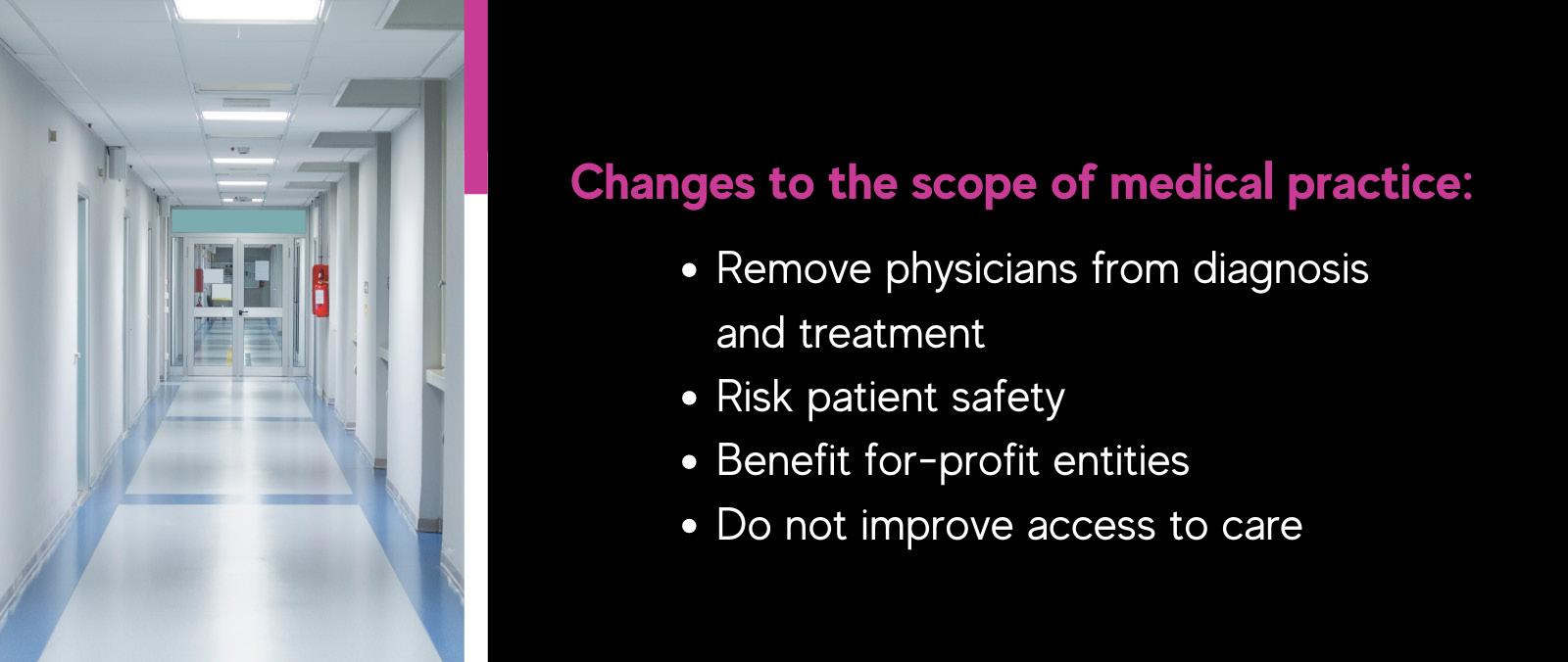
Monthly "Rise and Progress" Video Series
The MSMS Government Relations Department hosts a video series called “Rise and Progress” where members can tune in to learn about the latest news happening at the Michigan State Capitol and current advocacy work. Videos are available on MSMS ’ You Tube Channel at www.youtube.com/msmsorg.
October: MSMS state and federal government relations manag ers Kate Dorsey and Scott Kempa discuss scope of practice issues including Nurse Practitioners (SB 680) and Naturopathic Practi tioners (SB 990).
September: Scott Kempa and Kate Dorsey share how an MSMS-initiated proposal was included in the state of Michigan's 2023 budget.

August: Scott Kempa and Kate Dorsey discuss what the Michigan legislature is considering regarding gun safety.
July: Kate Dorsey and Scott Kempa discuss the U.S. Supreme Court's decision on women's reproductive rights: what happened, where things stand, and what's next.
Link for October Link for September Link for August Link for July

November 3, 2022 ~ 5th Annual Detroit Stroke
Henry Ford Health, Hybrid Conference with In-Person and Virtual Options, 8 am – 4:30 pm, Henry Ford Hospital in Detroit, 6.75 AMA/PRA Category 1 CME Credits.
November 4, 2022 ~ A Day of Board of Medicine Renewal Requirements
MSMS In-Person Meeting, 8:30 am – 4:15 pm, Sheraton in Ann Arbor. The meeting will include: 1-hr Medical Ethics, 3-hr Pain Management, 3-hr Implicit Bias. 7 AMA/PRA Category 1 CME Credits. Cost $270 members, $350 non-members, $180 retirees
November 5, 2022 ~ MSMS 26th Annual Conference on Bioethics
MSMS In-Person and Virtual Meeting, 8:30 am – 4:15 pm, Sheraton in Ann Arbor. 6 AMA/PRA Category 1 CME Credits. Cost $50 members, $100 non-members.
November 7, 2022 ~ Implicit Bias Training
MSMS Monday Night Medicine Series, Live Webinar, 6:30 pm – 8 pm, 1.5 AMA/PRA Category 1 CME Credits. These sessions will fulfill the new LARA requirement for implicit bias training. Cost: $75 members, $100 non-members.
November 9, 2022 ~ The Gravity of Licensing Disciplinary Actions
MSMS Grand Rounds, FREE Live Webinar, 12 pm – 12:45 pm, .75 AMA/PRA Category 1 CME Credit.
November 16, 2022 ~ Reducing Unconscious Bias – an Imperative (RUBI)
MSMS Implicit Bias Training Series, Live Webinar, 12 pm – 1 pm, 1 AMA/PRA Category 1 CME Credit. Cost $100 members, $150 non-members.
November 17, 2022 ~ MSMS 157th Annual Scientific Meeting
Live Virtual Meeting via Zoom, 3 pm – 6 pm, 3 AMA/PRA Category 1 CME Credits, cost $135 for members, $185 for non-members.
November 30, 2022 ~ Reducing Unconscious Bias – an Imperative (RUBI)
MSMS Implicit Bias Training Series, Live Webinar, 12 pm – 1 pm, 1 AMA/PRA Category 1 CME Credit. Cost $100 members, $150 non-members.
November 30, 2022 ~ Implicit Bias Training
MSMS Wednesday Night Medicine Series, Live Webinar, 6 pm – 8 pm, 2 AMA/PRA Category 1 CME Credits. These sessions will fulfill the new LARA requirement for implicit bias training. Cost: $100 members, $150 non-members.
December 14, 2022 ~ MDHHS Year in Review with Natasha Bagdasarian, MD.
MSMS Grand Rounds, FREE Live Webinar, 12 pm – 12:45 pm, .75 AMA/PRA Category 1 CME Credit.
December 14, 2022 ~ Health Can’t Wait Act: New Changes to the Prior Authorization Process
MSMS Practice Management Series, FREE Live Webinar, 1 pm – 2 pm, 1 AMA/PRA Category 1 Credit.
Macomb
of the Macomb County
Society
The Macomb Medicus is the official quarterly journal of the Macomb County Medical Society. It is a full-color glossy magazine published both electronically and in hard copy format. It is a valued news source for our 600 plus physician members of all specialties and their staff throughout Macomb County. In addition to members the Macomb Medicus is sent to hospital executives, Michigan State Medical Society staff, other county medical society staff, and healthcare related businesses/organizations in Macomb County. The Macomb Medicus is read by an impressive cross section of the healthcare community and is electronically available on our website at www.macombcms.org.


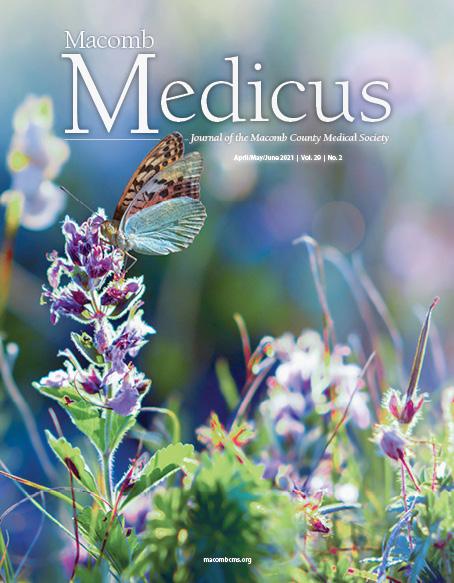
FREE Hotlink to Your Website & Free Advertising Design!
advertising rates and information, please contact: Heidi Leach, Executive Director & Managing Editor Macomb County Medical Society, PO Box 551 810-712-2546
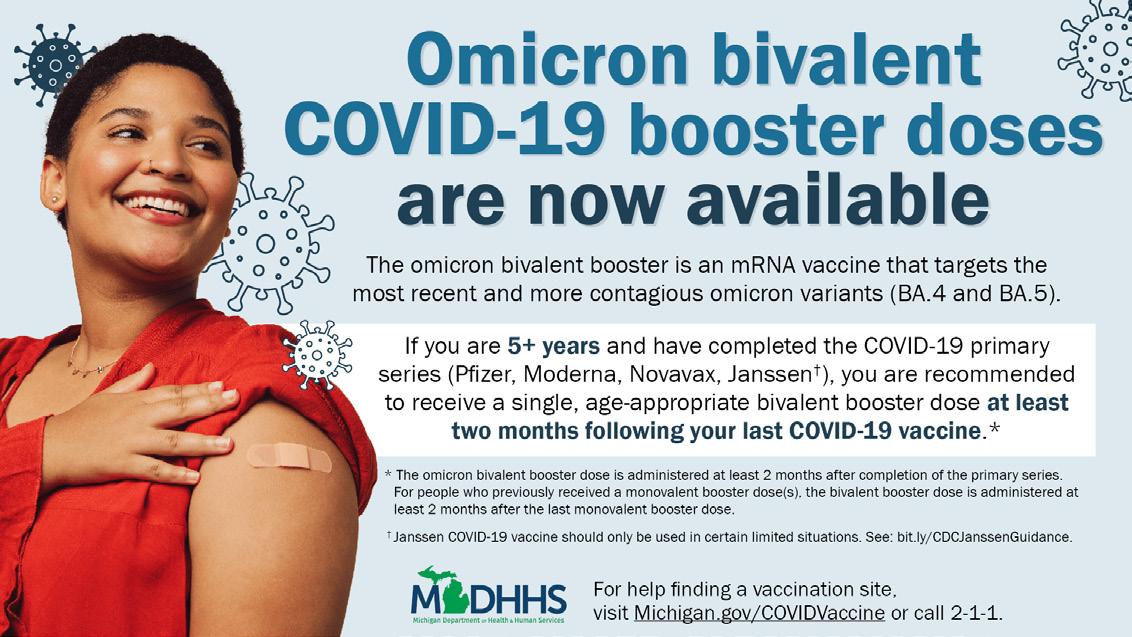
macombcms@gmail.com
www.macombcms.org
PANDEMIC PUSHES U.S. DOCTOR BURNOUT TO ALL-TIME HIGH OF 63%
 By: Sara Berg, MS, Senior AMA News Writer
By: Sara Berg, MS, Senior AMA News Writer
Three in five physicians reported at least one manifestation of burnout during the height of the Omicron wave that struck the U.S. during the winter of 2021–2022, pushing physician burn out rates to an all-time high and demonstrating more than ever the need for a renewed national commitment to bolster the physicians and other health professionals who have worked so tirelessly to save countless lives during the COVID-19 pandemic.
Between Dec. 9, 2021, and Jan. 24, 2022, nearly 2,500 U.S. physicians responded to a survey by researchers from the AMA, the Mayo Clinic, Stanford University School of Medicine and the University of Colorado School of Medicine. The researchers found that, overall, 62.8% of physicians had at least one man ifestation of burnout in 2021, compared with 38.2% in 2020, 43.9% in 2017, 54.4% in 2014 and 45.5% in 2011. These trends were consistent across nearly all specialties.
Published in Mayo Clinic Proceedings, the study, “Changes in Burnout and Satisfaction With Work-Life Integration in Physicians Over the First 2 Years of the COVID-19 Pandemic,” also found that satisfaction with work-life integration dropped from 46.1% in 2020 to 30.2% in 2021. Meanwhile, average depression scores rose from 49.5% in 2020 to 52.5% in 2021. This modest rise in depression suggests the burnout increase is primarily due to work-related distress.
Even as early issues of insufficient personal protective equip ment, increased workload, risk of infection, and lack of vacci nations and COVID-19 treatments have improved, physicians are still struggling with new challenges. There are multiple waves of new variants such as Omicron, the chronicity of the COVID-19 work burden, mistreatment of health professionals, staffing shortages, politicization of vaccination and antiscience attitudes, which have all contributed to a significant spike in the overall rate of physician burnout compared to earlier triennial surveys conducted over the last decade-plus, says the study.
Professional fulfillment scores also fell, dropping from 40% in 2020 to 22.4% last year. Consistent with these trends in profes sional fulfillment, 57.5% of physicians last year indicated they would choose to become a doctor again, dropping from 72.2% in 2020.
“While the worst days of the COVID-19 pandemic are hopefully behind us, there is an urgent need to attend to physicians who put everything into our nation’s response to COVID-19, too
often at the expense of their own well-being,” said AMA President Jack Resneck Jr., MD. “The sober findings from the new research demand urgent action as outlined in the AMA’s Recovery Plan for America’s Physicians, which focuses on supporting physicians, removing obstacles and burdens that interfere with patient care, and prioritizing physician well-being as essential requirements to achieving national health goals.”

The AMA’s ongoing work to mitigate physician burnout, as exemplified by the Recovery Plan for America’s Physicians, strives to attack the dysfunction in health care by removing the obstacles and burdens that interfere with patient care. The AMA Physician Well-being Program offers physicians and health systems a choice of cutting-edge tools, information and resources to help rekindle a joy in medicine.
Road map for change
While this is widely recognized, large scale change is needed to address the physician burnout crisis, according to the study. Fortunately, the road map to respond has already been devel oped with the National Academy of Medicine (NAM) consensus report Taking Action Against Clinician Burnout: A System Approach to Professional Well-being, which called for immediate action from the health care system to combat physician burnout and improve well-being.
Earlier this year, the U.S. Surgeon General also released an advisory on addressing health worker burnout, calling for action by federal, state and local government, health care organizations, health insurers, technology companies, training programs and accrediting bodies, notes the study.
Additionally, President Biden signed the Lorna Breen Health Care Provider Protection Act, which provides federal funding for mental health education and awareness. This was created to protect the well-being of health care workers.
While this progress is encouraging, these initial actions primarily focused on personal resilience rather than addressing the system issues specified in the NAM consensus report, notes the study. Research has shown that a burnout isn’t due to a resiliency deficit—it’s a system issue.
That is why “new legislation and action that is aligned with the NAM recommendations and paired with more substantive funding will be needed to address the problem,” says the study,
A M A N E W S
adding that “timely, system-level interventions implemented by government, payers, regulatory bodies and health care organi zations are warranted.”
WANT TO HELP PHYSICIANS THRIVE? STOP DOING THESE 6 THINGS NOW
By: Tanya Albert Henry, Contributing AMA News WriterThere are little steps medical practices and health systems can take today to begin chipping away at the unnecessary tasks in a physician’s day—the ones that don’t improve clinical outcomes, suck the joy out of practicing medicine and contribute to doctor burnout.
Studies have found that even small steps toward reducing or removing nonessential work—such as not having to wade through EHR inbox messages that aren’t necessary for a physi cian to read, or finding ways to refill medicine more efficiently for long-term prescriptions—can make a big difference in freeing up critical time during the day and helping improve a physician’s efficiency.
The AMA’s STEPS Forward® team has complied a “Stop This, Start That Checklist” to help your practice or health system get started on the journey. Each recommendation is complete with links to AMA STEPS Forward toolkits that can help guide leaders through the steps to take to make changes.
Here are six habits to consider changing today.
Stop: Automatic notifications about scheduled appoint ments hitting the inbox. This includes notifications of patients’ specialist visits and diagnostic testing. Instead, ask your IT department to help turn off the inbox notifications. Following this five-step EHR inbox management toolkit can help get your organization started. If the IT department says it is not possible, escalate the ask to the chief information officer or the compliance officer.
Stop: Directly answering patient inquiries that come through the patient portal. Instead, develop standard protocols that allow team members to address the messages. This AMA STEPS Forward patient portal optimization toolkit offers five steps to help make this change.
Stop: Being caught off guard by a patient’s unexpected agenda items. Start implementing pre-appointment question naires. This AMA STEPS Forward pre-visit planning toolkit can guide your practice in developing a questionnaire for patients to complete.
Stop: Making a phone call or sending a patient portal mes sage to review lab results. In its place, develop pre-visit lab protocols and review results with patients during their appoint ment. Follow the pre-visit planning toolkit for concrete steps on how to implement that into your workflow.
Stop: Refilling long-term medications at each appointment. Providing only enough refills to last the patient until the next appointment is an added burden on physicians. Instead, imple ment 90X4 annual prescription renewals, allowing long-term medications to be refilled as a 90-day supply with four refills once a year. This medication management toolkit offers con crete guidance on how to implement this approach.
Stop: Resigning yourself to “stupid stuff” just because that’s how it has always been. Instead, engage your leaders to start a “Getting Rid of Stupid Stuff” initiative. This toolkit offers five steps to help physicians reclaim their day, including appointing a high-level champion of the project and engaging doctors and their teams.

Stop: Reading laboratory results ordered by other physi cians. As an alternative, ask your IT department to help turn off notifications in the EHR. The AMA STEPS Forward “De-Imple mentation Checklist ” offers ways to reduce unnecessary daily burdens for physicians and other health professionals including minimizing alerts in the EHR.
Committed to making physician burnout a thing of the past, the AMA has studied, and is currently addressing issues causing and fueling physician burnout—including time constraints, technology and regulations—to better understand and reduce the challenges physicians face. By focusing on factors causing burnout at the system-level, the AMA assesses an organization’s well-being and offers guidance and targeted solutions to sup port physician well-being and satisfaction.
The AMA STEPS Forward open-access toolkits offer innovative strategies that allow physicians and their staff to thrive in the new health care environment. These courses can help you prevent physician burnout, create the organizational founda tion for joy in medicine and improve practice efficiency.
Additionally, the “Saving Time Playbook” is another AMA resource to help your practice become more efficient.
AMA 2022 OVERDOSE REPORT SHOWS WORSENING EPIDEMIC, NEED FOR ALL-HANDS APPROACH
The AMA has issued its 2022 Overdose Epidemic National Report, which showed a worsening epidemic and called for an all-hands approach—physicians, policymakers, public health experts, educators, faith leaders and employers—to help save lives.
The report highlighted that while physicians and other health care professionals have decreased opioid prescribing by nearly
50% nationally since 2012, used state pre scription drug monitor ing programs (PDMP) more than 1.1 billion times in 2021, and have increased prescriptions for medications to treat opioid use disorder and naloxone—more than 107,000 Americans died of a drugrelated overdose in 2021, mainly due to illicitly manufactured fentanyl, methamphetamine and cocaine. At the same time, health insurers continue to violate state and federal mental health and substance use disorder parity laws, individuals are unable to access treatment for substance use disorders or mental illness and patients with pain continue to suffer by the misapplication of the 2016 CDC opioid prescribing guideline. Health inequities also continue to worsen.
“No community has been—or will be—spared the pain of this epidemic. The spiking mortality numbers—with young people and Black and Brown Americans dying at the fastest growing rates—add yet another urgent call to remove health inequities from the nation’s health care system. We know policymakers have not exhausted all remedies. Until we have, we must keep advocating for humane, evidence-based responses,” said Bobby Mukkamala, MD, chair of the AMA Substance Use and Pain Care Task Force.
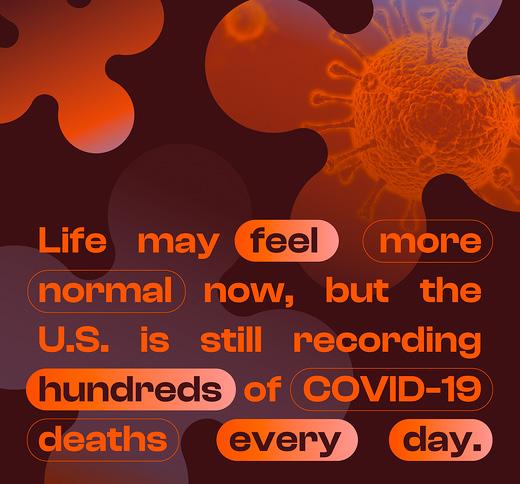
Read the full report, including state-by-state data for opioid prescriptions, medications for opioid use disorder (MOUD), naloxone and PDMP use. According to this report, Michigan had a 48.1% decrease in total opioid prescriptions from 20122021. F

29753 Hoover Road, Suite A Warren, Michigan 48093 (586) 573 4333 Phone (586) 573-2149 Fax
29753 Hoover Road, Suite A Warren, Michigan 48093 (586) 573-4333 Phone (586) 573-2149 Fax
www.eyeconsultantsofmich.com
www.eyeconsultantsofmich.com
Henry Ford Macomb

New Booster Uptake
Suggested Talking Points
Scientists modified our COVID-19 vaccines to keep up with the changing virus.
• The COVID-19 virus has mutated since the beginning of the pandemic.
• In order to keep up with the virus, scientists modified our COVID-19 vaccines so that they better target the Omicron subvariant BA.5, which is dominant in the U.S. This is similar to our phones receiving a software update so that they can function better.
• Americans still need to receive the original vaccines for their primary series, but the updated shots are now authorized for use as boosters for people 12 and older.
Most Americans are eligible for an updated booster.
• As of September 29, less than 4 percent of eligible Americans had received an updated booster.
• Half of adults have heard “a little” or “nothing at all” about the updated COVID-19 boosters.
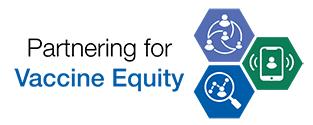
• Two in five adults who have received their primary series aren’t sure if the modified shots are recommended for them.
• Everyone who is 12 or older, has received their primary series, and is at least two months out from their last shot is eligible for an updated booster.
• The modified shot is now the only approved booster option for people 12 and older.
The updated boosters are most crucial for high-risk individuals.
• Older adults and immunocompromised people are at the highest risk for severe disease and will benefit most from the updated boosters’ added protection.
• Younger, healthier individuals are already well protected against severe disease from the primary series. But getting an updated booster could raise immunity against infection and future variants.
• Winter comes with a higher likelihood of getting sick from viruses like COVID-19 and the flu. You can safely get vaccinated against both at the same appointment.
Frequently Asked Questions
1. Why is it important to get an updated booster?
The original COVID-19 vaccines continue to be effective against severe disease, hospitalization, and death from the virus, but they do not offer strong protection against Omicron infection. The updated boosters are expected to provide more targeted protection against BA.5 infection and severe disease. By decreasing the risk of infection, the new shots would in turn minimize the number of hospitalizations and deaths, especially among older adults and individuals who are immunocompromised. This is especially important as winter approaches and people are more likely to get sick from viruses like COVID-19 and the flu.
2. Who is eligible to get an updated booster?
Pfizer’s 30-microgram fall booster is authorized for people ages 12 and older, while Moderna’s 50microgram booster is authorized for adults only. The CDC says eligible people should get boosted at least two months after their last shot.
3. What is the difference between being “fully vaccinated” and being “up to date”?
The term “fully vaccinated” continues to be used to describe people who have received their primary COVID-19 vaccine series. But the CDC is now urging people to stay “up to date” with COVID-19 vaccines, which means getting all the shots for which you are currently eligible. People ages 12 and older should receive an updated booster at least two months after their last shot. Kids 5 to 11 should also get a booster, though they are currently only eligible for boosters developed with the original COVID-19 vaccine formula.

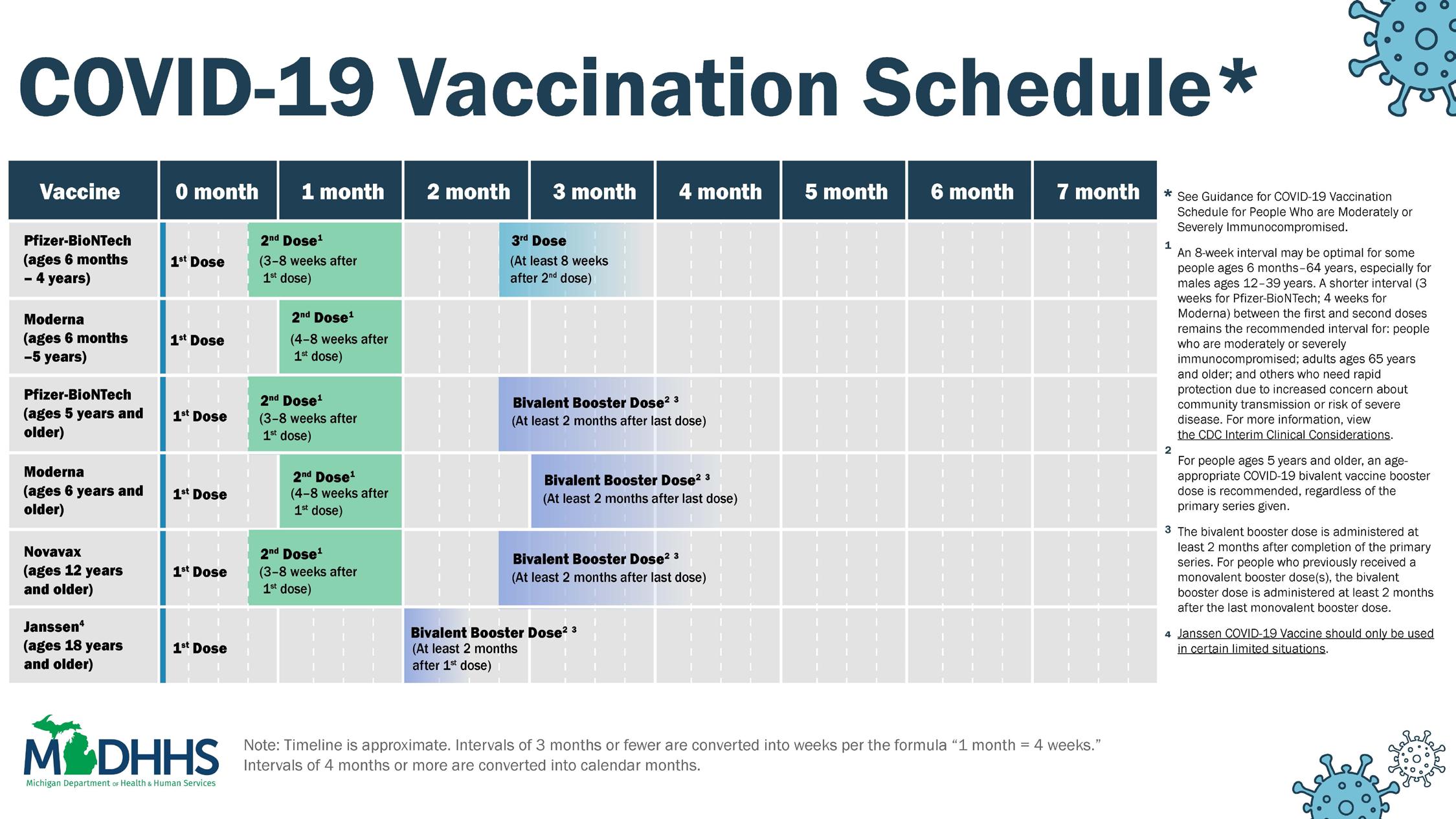
Take Action and Contact your Legislators
Tell Congress to Support the Improving Seniors' Timely Access to Care Act of 2022
Bipartisan legislation was recently introduced in the House of Representatives aimed at protecting patients from the burden of prior authorizations. The Improving Seniors’ Timely Access to Care Act of 2022 would reduce unnecessary delays in care by streamlining and standardizing prior authorization under the Medicare Advantage program, providing much-needed oversight and transparency of health insurance for America’s seniors.
Vote YES on the Improving Seniors Timely Access to Care Act
Support Telehealth Parity
House Bill 5651 will require payment and coverage parity for telemedicine services the same as if the service were provided in-person, ensuring patients have access to quality care while allowing telehealth to remain a sustainable option for physi cians to offer.
Vote YES on HB 5651
Nurse Scope of Practice Expansion
Senate Bill 680 will allow for full independent practice for nurse practitioners (NPs). Under the bill, not only would NPs be allowed to provide direct care without physician supervision or collaboration, they would also be allowed to prescribe opioids and other controlled substances. Further, the bill wouldn’t even require additional training or education for NPs. It is imperative that care teams are led by physicians.
Vote NO on SB 680
Tell your Lawmaker to Protect Auto Accident Victims Access to Care
Tell your legislator that you support HB 4486 and SB 314 and that they have a responsibility to protect auto accident victims’ right to recover.
Vote YES on HB4486 and SB 314
Support the Push for Behavioral Health Integration
Efforts to reform Michigan’s Medicaid program by introducing Senate Bills 597 and 598 are necessary and appreciated. Inte grating physical and behavioral health care services is critical to ensure each patient receives the person-centered care required. However, legislation must include a clinical model that removes existing barriers and care delays by advancing seamless integration amongst clinicians across specialties and care settings.
SBs 597 & 598 take some positive steps toward needed integra tion, however, further improvements are necessary.
Urge Your Senator to recognize the key role primary care plays in the delivery of efficient, effective, and coordinated behavioral health services
Urge Your Legislator to Ensure Safe Drinking Water in Mich igan Schools
The Filter First approach to reducing lead in school drinking water calls for providing filtered drinking water stations for students and staff in Michigan Public Schools.
Vote YES on SBs 184-185
County Legislator Contact
MICHIGAN SENATE
Senate District 8
Sen. Doug Wozniak (R)
5200 Binsfeld Bldg. (517) 373-7670
SenDWozniak@senate.michigan.gov
Senate District 9
Sen. Paul Wojno (D)
6300 Binsfeld Bldg. (517) 373-8360
SenPWojno@senate.michigan.gov
MICHIGAN HOUSE
House District 18
Rep. Kevin Hertel (D)
697 Anderson Bldg. (517) 373-1180
KevinHertel@house.mi.gov
House District 22
Rep. Richard Steenland (D)
786 Anderson Bldg. (517) 373-0854
RichardSteenland@house.mi.gov
House District 24
Rep. Steve Marino (R)
788 Anderson Bldg. (517) 373-0113
SteveMarino@house.mi.gov
House District 25
Rep. Nate Shannon (D)
789 Anderson Bldg. (517) 373-2275
NateShannon@house.mi.gov
House District 28
Rep. Lori Stone (D)
792 Anderson Bldg. (517) 373-1772
LoriStone@house.mi.gov
House District 30
Rep. Diana Farrington (R)
794 Anderson Bldg. (517) 373-7768
DianaFarrington@house.mi.gov
House District 31
Rep. William Sowerby (D)
795 Anderson Bldg. (517) 373-0159
WilliamSowerby@house.mi.gov
Senate District 10
Sen. Michael MacDonald (R)
4200 Binsfeld Bldg.
(517) 373-7315
SenMMacdonald@senate.michigan.gov
Senate District 25
Sen. Dan Lauwers (R)
S-2 Capitol Bldg. (517) 373-7708
SenDLauwers@senate.michigan.gov
House District 32
Rep. Pamela Hornberger (R)
796 Anderson Bldg. (517) 373-8931
PamelaHornberger@house.mi.gov
House District 33
Rep. Jeff Yaroch (R)
797 Anderson Bldg. (517) 373-0820
JeffYaroch@house.mi.gov
House District 36
Vacant (517) 373-0843
COMMITTEES
MI House – Health Policy
Lori Stone (D), District 28
MI House – Appropriations
Pamela Hornberger (R), District 32
Steve Marino (R), District 24
Jeff Yaroch (R), District 33
MI House – Insurance
Richard Steenland (D), District 22
Lori Stone (D), District 28
MI House – Regulatory Reform
Kevin Hertel (D) - Minority Vice Chair
Richard Steenland (D), District 22
MI Senate – Health Policy
Michael MacDonald (R), District 10
Paul Wojno (D), District 9
MI Senate – Appropriations
Michael MacDonald (R), District 10

PRESORTED
Macomb County Medical Society P.O. Box 551 Lexington, Michigan 48450-0551
